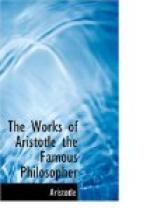These vessels are narrower and shorter in women than in men; but it must be noticed that they are more intertwined and contorted than in men, and shrink together by reason of their shortness that they may, by their looseness, be better stretched out when necessary: and these vessels in women are carried in an oblique direction through the lesser bowels and testicles but are divided into two branches half way. The larger goes to the stones and forms a winding body, and wonderfully inoculates the lesser branches where it disperses itself, and especially at the higher part of the bottom of the womb, for its nourishment, and that part of the courses may pass through the vessels; and seeing that women’s testicles are situated near the womb, for that cause those vessels do not fall from the peritoneum, nor do they make so much passage as in men, as they do not extend to the share-bone.
The stones of woman, commonly called testicles, do not perform the same function as in men, for they are altogether different in position, size, temperature, substance, form and covering. They are situated in the hollow of the muscles of the loins, so that, by contracting greater heat, they may be more fruitful, their office being to contain the ova or eggs, one of which, being impregnated by the man’s seed engenders the child. They are, however, different from those of the male in shape, because they are smaller and flatter at each end, and not so round or oval; the external superficies is also more unequal, and has the appearance of a number of knobs or kernels mixed together.
There is a difference, also, in the substance, as they are much softer and more pliable, and not nearly so compact. Their size and temperature are also different for they are much colder and smaller than in men, and their covering or enclosure is likewise quite different; for as men’s are wrapped in several covers, because they are very pendulous and would be easily injured unless they were so protected by nature, so women’s stones, being internal and thus less subject to being hurt, are covered by only one membrane, and are likewise half covered by the peritoneum.
The ejaculatory vessels are two small passages, one on either side, which do not differ in any respect from the spermatic veins in substance. They rise in one place from the bottom of the womb, and do not reach from their other extremity either to the stones or to any other part, but are shut up and impassable, and adhere to the womb as the colon does to the blind gut, and winding half way about; and though the testicles are not close to them and do not touch them, yet they are fastened to them by certain membranes which resemble the wing of a bat, through which certain veins and arteries passing from the end of the testicles may be said to have their passages going from the corners of the womb to the testicles, and these ligaments in women are the cremasters[3] in men, of which I shall speak more fully when I come to describe the male parts of generation.




